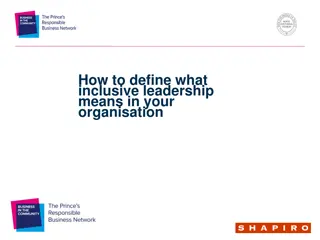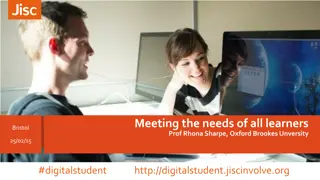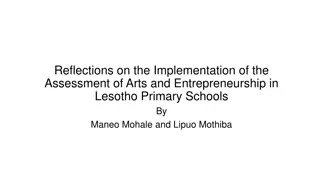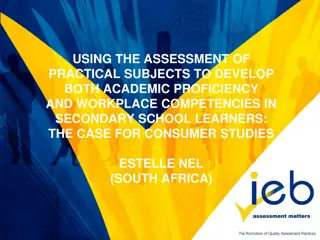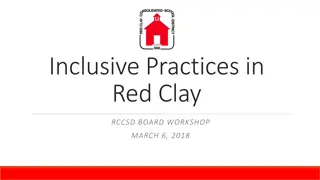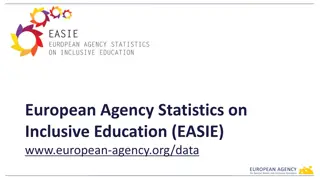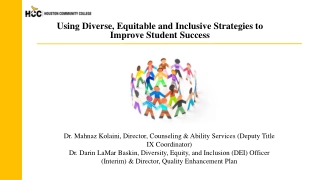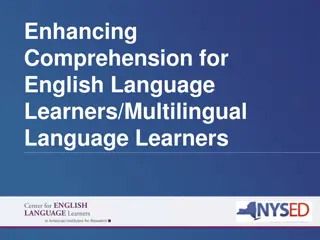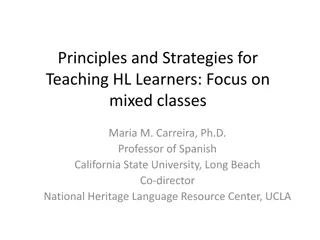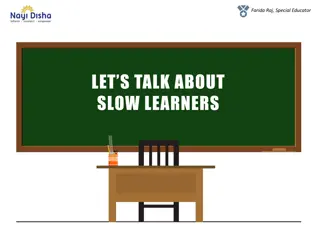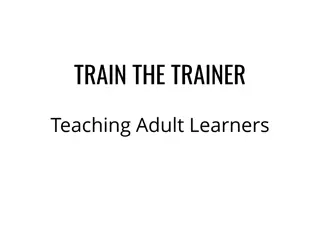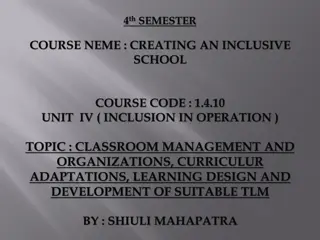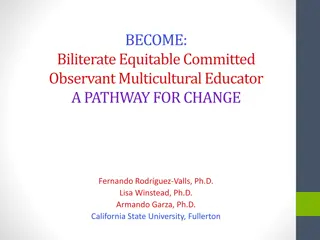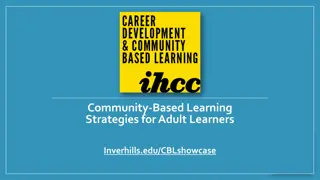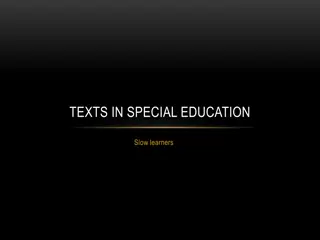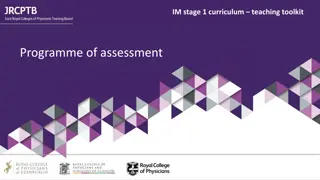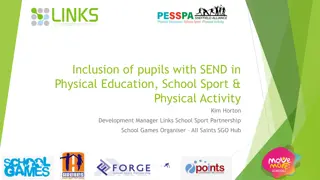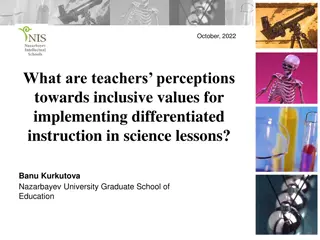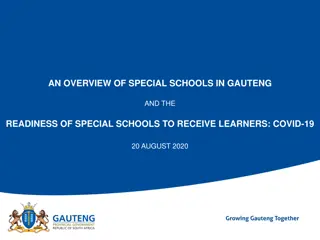Inclusive Assessment Strategies for Diverse Learners
This presentation emphasizes the importance of inclusive assessment practices for children with diverse needs, including those with disabilities and English learners. It provides guidance on adapting assessments to accommodate individual differences, using alternative communication methods, and involving interpreters or language support. The aim is to ensure fair and accurate assessment outcomes for all children, regardless of their backgrounds or abilities.
Download Presentation

Please find below an Image/Link to download the presentation.
The content on the website is provided AS IS for your information and personal use only. It may not be sold, licensed, or shared on other websites without obtaining consent from the author. Download presentation by click this link. If you encounter any issues during the download, it is possible that the publisher has removed the file from their server.
E N D
Presentation Transcript
1 ASSESSING ALL CHILDREN
2 Assessment Overview Instructions for: Assessing all constructs Assessing all children
3 Assessment Overview The assessment is based on authentic interaction. Alternative means of communication are acceptable. Supports can be offered to the child. Accommodations are acknowledged and acceptable, along with flexible administration/ collection of evidence (e.g., positioning support, various times of the day).
4 Assessing Children with Disabilities Communicate in a method the child understands and can respond in. Incorporate any accommodations, specialized equipment or other assistive technology the child uses in daily classroom activities, into the Observation, Situation, or Task for that child. The various situations developed to help a teacher pinpoint a child s skill level should be used as appropriate given the child s disabilities. e.g., For a child with a visual impairment, make sure the lighting is good, the materials are large enough, and marks on the paper are big enough for the child to see. Provide appropriate support with positioning for children who need it.
5 Assessing Children with Disabilities Assessment Features Included examples of children with disabilities throughout the Construct Progression documents to help teachers see children with disabilities reflected in the assessment materials. Provided a space on the Single Child Documentation Forms to indicate when the assessment of a construct is not appropriate for that child based on his/her disability (explains why child not assessed on the construct).* *Recommend that there also be a place where teachers can indicate such information on the technology platform used to support this assessment.
6 Assessing English Learners Communicate in a language the child understands and can respond in. This could be a language other than English and involve an interpreter. Involve an adult who speaks the child s language in collecting observational data, especially for those constructs that rely more heavily on language and communication. Repeat a question if needed or use different words to make a question more understandable (as long as the words do not tell the child how to do the skill being assessed).
7 Assessing English Learners Assessment Features If possible, teacher should communicate in the child s language As needed, teacher should recruit an adult who speaks the child s language to collect observational data. The Construct Progression and Assessment Means Forms provide examples of children who are acquiring English so teachers can see these children being assessed.
8 Considering Diversity Interact with children as teacher normally would. Unless the directions with the assessment means for a particular construct indicate specific restrictions, the teacher should: Use or modify activities and materials to make them interesting and engaging for the child, given his or her background and individual interests. Repeat a question if needed or use different words to make a question more understandable (as long as the words do not tell the child how to do the skill being assessed). Modify the situation or task directions as appropriate to reflect the racial and cultural norms of children in the classroom.
9 Assessing Diverse Children Assessment Features Names of children that appear in the examples in the Construct Progression Documents and Assessment Means Forms reflect racial and cultural diversity. Teachers can modify the situation or task directions as appropriate to reflect the racial and cultural norms of children in their classroom. Teachers can use activities or tasks that are likely to be engaging for the child given his or her background and individual interests and can modify tasks if they are not engaging.



